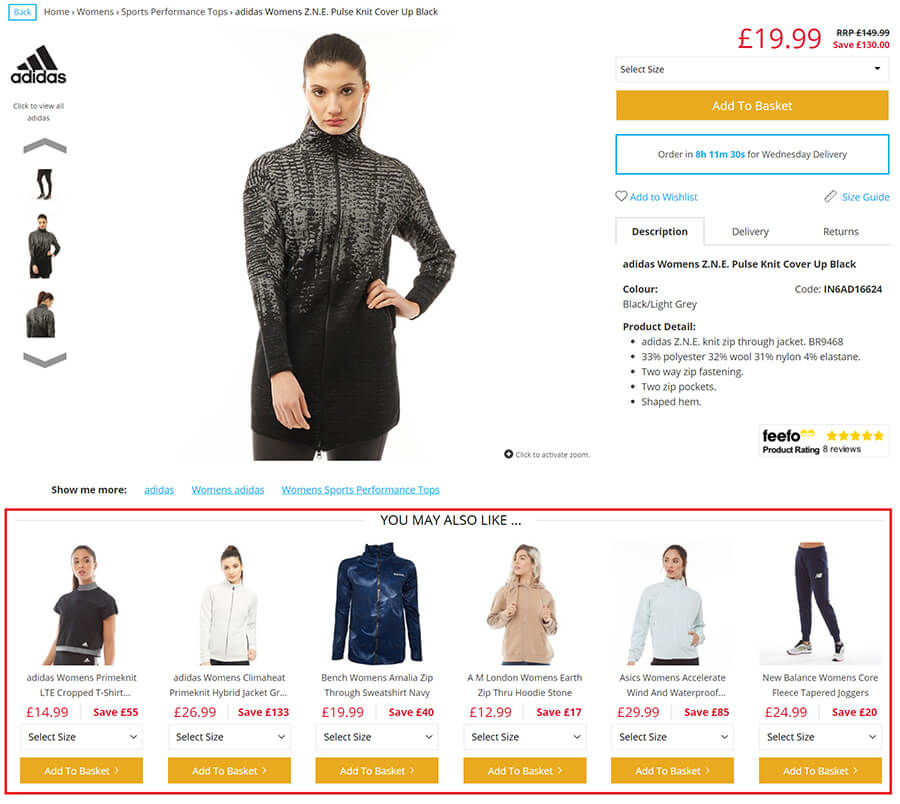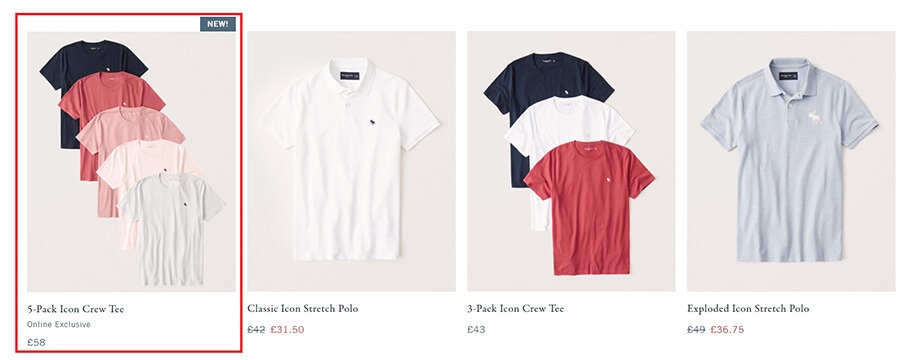BLOG
(GMV) Gross Merchandise Value: Meaning & Calculation
Published: Aug 3, 2020
What is Gross Merchandise Value and why is it important to your eCommerce business? We break down what GMV means, how you can calculate it, and how you can improve your GMV.
When you are running an eCommerce website or deal with any kind of retail, it is vital to know what GMV is. Also known as Gross Merchandise Value or Gross Merchandise Volume, this important figure tells you the total value of goods you have sold over a certain period. This is a good metric to keep in mind when working on ways to increase sales and expand your company’s bottom line.
Below, we’ll take a look at everything GMV: what it is, why it is so important, and how you can improve your own GMV while making sales to satisfied customers.
What is GMV (Gross Merchandise Value)?
Gross Merchandise Value (GMV) is a metric that measures your total value of sales over a certain period of time. It’s a metric that is most commonly used in the eCommerce industry and is also sometimes referred to as Gross Merchandise Volume.
GMV can be used to determine the overall health of an eCommerce business, and a good indicator of growth. This is because it measures the volume and value of merchandise sold or the number of transactions handled. So if your GMV is up, business should be good!
According to the Corporate Finance Institute, eCommerce GMV should be measured at least once per year, if not once per financial quarter. However, it’s important to note that the Gross Merchandise Value calculation is made before the deduction of fees and expenses associated with the sale of products. This includes things like the cost of delivery, discounts, advertising costs, and returns, etc.
GMV is at its most useful when it’s being used as a comparative measure over time. This could be comparing current quarter sales vs the previous, or year on year. Ultimately, Gross Merchandise Value is another way companies can understand and put a figure on their sales numbers.
How to Calculate GMV
The simplest and most common way to calculate GMV is by using the formula below. This simply takes the price charged to the customer and multiplies it by the number of items sold:
Gross Merchandise Value = Sales Price of Goods x Number of Goods Sold
So let’s say you sell 10 products for $100 each, your Gross Merchandise Value would amount to $1,000.
Why you shouldn’t rely on GMV alone
Calculating your GMV in this way will give you a good idea of how much growth your business is experiencing as it looks at how much you are actually selling. However, you shouldn’t rely on it solely as the one formula to determine how healthy your company is.
This is because while Gross Merchandise Value tells you how much you’re growing, it doesn’t tell you whether or not you are actually profiting off the real value of the items you sell.
For example, if GMV was your company’s primary growth metric, you may focus on more expensive, big-ticket products as the sales price of these products will help boost your total transaction value.
However, the margins on such products are often much lower than cheaper products such as clothing. So as you can see, it’s not necessarily an accurate representation of an eCommerce company’s performance.
So going back to our example above if those 10 products you sold for $100 cost you $75 to make or purchase, you’re only making $250 profit.
You won’t be able to use this formula to determine if you are selling your items for too much or too little as it doesn’t take into account margins. Number seven on our list below can help you do that!
So should I still track GMV?
Yes, it’s still an important metric as it essentially calculates your total gross sales value. Of course, you want this figure to be relatively high as sales are the lifeblood of any eCommerce business.
When you use this figure comparatively, you want it to be growing, whether it’s year-on-year or quarter vs quarter. If it’s growing, it means you’re either selling more, or you’re selling more expensive items both of which should be good for your bottom line.
But as we mentioned above there are other financial metrics that can help determine the performance of your eCommerce business.
Consider using other eCommerce KPIs to get a more balanced and accurate view of your performance:
1. Net Merchandise Value (NMV) is what you get after you deduct all the fees and expenses from your Gross Merchandise Value over a period of time. It’s a more realistic look into how your business is actually performing as it takes into account costs, refunds, etc.
NMV = GMV – All Costs (marketing, refunds, gateway payments)
2. Customer Acquisition Cost (CAC) is calculated simply by dividing all costs spent on acquiring customers (including software costs, eCommerce merchandising tools included, marketing team salaries, etc.) by the total number of customers acquired in the time period the money was spent.
So let’s say you spent $5,000 on marketing in one month and acquired 500 new customers. Your CAC would be $10.
CAC = Total Marketing Spend / Number of acquired customers
This is an important metric as it essentially tracks the effectiveness of your advertising, and how much you are paying to get new customers. If this figure is too high, you’ll be eating into margins and wasting your budget.
3. Customer Lifetime Value (CLV) works out the amount of money customers will spend with you over the entire life of your relationship. To calculate CLV you’ll need to define LTV first, that is Lifetime Value:
LTV = AOV x Number of transactions x Retention time period
CLV = LTV x Profit margin
CLV essentially tells you if your e-commerce customer retention efforts are paying off and how much the customers like your product or service. The higher this number, the greater your profits will be. If it’s low, you know you need to work on your customer retention strategy, or that something in your product or service isn’t meeting customer expectations.
4. Average Order Value (AOV) tracks the average amount a customer will spend each time they place an order. It’s simply calculated by dividing the total revenue by the number of orders.
AOV = Revenue / Total Number of orders
It’s clear you want this number to grow as it means your customers are spending more money with you, again this links back to CAC and increasing your CLV. If the amount is low you may need to look into ways of increasing your AOV.
5. Conversion rate (CVR). For eCommerce websites, this will be one of, if not the most important KPI to track. Conversion rate is an important metric that shows how your overall website is converting visitors into customers.
CVR = Number of transactions / Number of sessions
6. Profit Margin per Product (PMpP) will help you determine which products to push, how much you can discount, and where to keep a closer eye on things because margins are tight.
Product margin per product is easy to calculate. For example, if you sell a product for $25, and it costs $20 to make, the gross profit margin is 20% ($5 divided by $25).
PMpP = (Product price – Product cost) / Retail price
7. Net Promoter Score (NPS) is a customer loyalty and satisfaction metric. The score is taken from asking customers how likely they are to recommend your product or service to others on a scale of 0-10.
Satisfied customers mean returning customers so again the Net Promoter Score metric can help improve lifetime value and average order values as customers will be willing to spend more with you as they know the product or service will deliver.
3 ways you can spark GMV Growth
So if GMV is one of the financial metrics you are tracking, you’ll want to see this figure increasing. Since gross merchandise volume is the direct measurement of your growth, it only makes sense that smart e-commerce business owners will be looking for ways to improve it.
Need some ideas on boosting your Gross Merchandise Value? Here are a few:
1. Offer Free Shipping where you can
A study by UPS showed that 58% of online shoppers are willing to add additional items to their order if it means they get free shipping… Offering free shipping either across the board or after customers have reached a certain price threshold can be a great way to boost your GMV and your sales overall.
Not to mention this will increase the base value of your average order, as customers will start to add more items in order to qualify for free shipping.

2. Invest in cross-selling strategies
Cross-selling is a powerful way to get customers to buy more. The best part is, you don’t have to do much to convince them; it’s the customer that makes the final decision to buy more and expand their shopping cart.
You can add a “frequently bought with this item” window on your product pages, or even offer some accessories as last-minute add-ons on the checkout page. You’d be surprised how much this can boost your GMV!

3. Add bundles
Another great way to encourage your customers to buy more (without being too pushy about it) is to offer bundles and packaged deals. Not only is this effective for getting rid of some of your less-popular inventory, but it also can significantly improve your GMV.
Customers will be happy to invest in a bundle since they are getting more products than usual for a price that is much better than usual, so they will feel that they are getting a great deal. Meanwhile, you are making bigger average sales, getting rid of old inventory, and boosting your GMV. It’s a win-win situation!

Final thoughts
So whilst GMV will be a good metric to look at to determine total sales value and if this is improving, it needs to be used in conjunction with other metrics to give you a true picture of business performance.
It is critical to consistently measure your growth over each month to determine what you may be doing right or wrong. By creating more buying opportunities for customers using smart cross-selling strategies for adding bundled deals, you will be encouraging more activity on your website.
GMV FAQs
GMV or Gross Merchandise Volume is a term in eCommerce that shows the total sales value for merchandise sold through a marketplace over a specific time frame.
To calculate GMV simply take the sale price per item charged to the customer and multiply this by the number of items sold. For example, if you sell 10 t-shirts at $50, the GMV is $500.
There are many ways you can attain GMV growth. We detail 3 easy ways such as offering free shipping, product bundles and cross-selling strategies.